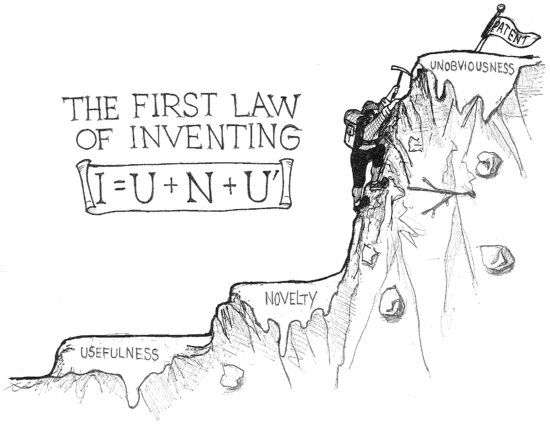5.4 THE FIRST LAW OF INVENTING
The following equation summarizes the legal requirements of a patentable invention:
![]()
where I is invention, U is utility or usefulness, N is novelty or newness, and U′ is unobviousness. We refer to this law as the content law because it lays out the contents required of a patentable invention. These three requirements are spelled out, respectively, in Sections 101, 102, and 103 of the Patent Law. In order for a thing to be patentable, these three requirements are essential and must coexist!
It is relatively easy to comply with the utility requirement, it is more difficult to meet the novelty requirement, and it is often most difficult to satisfy the unobviousness requirement. This is illustrated in Figure 5.1.
Figure 5.1 Scaling the patentability mountain. To reach the goal of a patent, one must reach each of the separate threshold standards for usefulness, novelty, and unobviousness.

5.4.1 Utility
For an invention to be patentable, it must be useful. Utility or usefulness is implied by the constitutional provision that an invention “… must promote the progress of science and useful arts …” and is further reflected in Section 101 of the Patent Law that “whoever invents any useful process … may obtain a patent therefor” (see also Section 5.1).
In contrast ...
Get How to Invent and Protect Your Invention: A Guide to Patents for Scientists and Engineers now with the O’Reilly learning platform.
O’Reilly members experience books, live events, courses curated by job role, and more from O’Reilly and nearly 200 top publishers.

